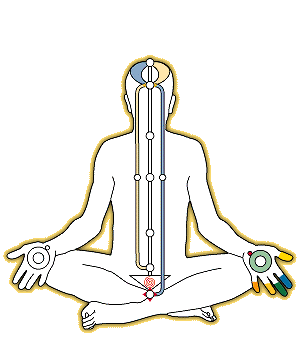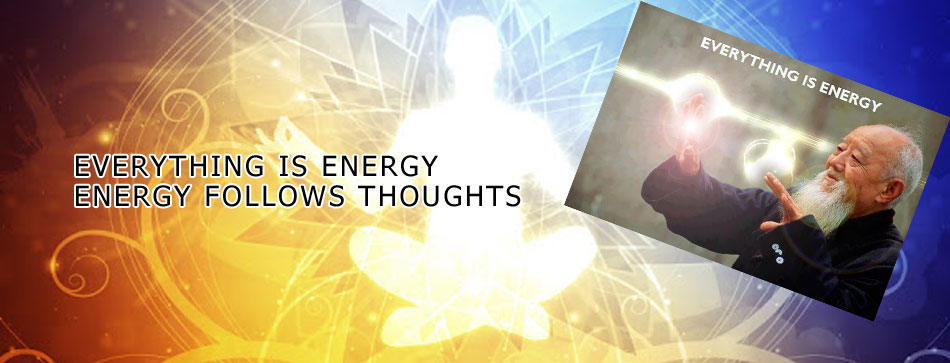BASIC PRINCIPLES OF OUR DIET…
- 2013-12-31
- By
- Posted in Nutritions
Basically nutrition begins the moment we think about food. It includes thinking, hearing, seeing, smelling, tasting and then digesting, assimilating and expelling of waste. Every food item has a unique energy frequency. When we think of it, our body detects the energy frequency and tries to either accept or reject it. Rejection is expressed in this case by stiffening of the muscles and acceptance by the contrary.
we go by the energy principle. We decide the diet for our clients according to the energy frequency of their body and the different types of food articles. This can be done by the medium of ayurveda, , modern theories like pH miracle, elemental nutrition and so on.
“Energy is the beginning, energy is the middle and the end of everything and everyone. If you can understand the energetics of it, you have understood how it works.”
Acidic or Alkaline
The universe operates by keeping opposites in balance, and your body is no exception. Just as it is a fact that you will die one day, it is your birth right to live healthy right up until the day you die. The three top killers of the world are Cancer, heart disease and diabetes. And there are a host of other illnesses caused by impaired metabolism and toxic environment within the human system.
The environment within the body if turned acidic is the cause of all disease in the body. So it turns out that the single measurement most important to your health is the pH of your blood and tissues – how acidic or alkaline your body is!
Our goal is to create the proper alkaline balance in your body. The way to do it is to eat a proper balance of acid and alkaline foods. That means 80% of your diet must be alkalizing foods. Our blood is ideally maintained at 7.365 pH – very mildly basic and on the contrary over acidification of the body tissues and fluids underlies all disease.
The early symptoms of acid imbalance may be allergy, cold, flu, sinusitis, headaches, skin eruptions. The acid waste sets the stage for the potentially devastating effects of a host of microscopic organisms in your body, starting with candida. The healthy bacteria in the intestines (probiotics) play a role in maintaining an environment where the harmful bacteria cannot survive. But less than 25% of people have the normal amount of probiotics.
What is the difference between a dietician and a nutritionist?
A dietitian studied dietetics, while a nutritionist studied nutrition. The two terms are often interchangeable, however they are not 100% identical.
Dietetics: the interpretation and communication of the science of nutrition so that people can make informed and practical choices about food and lifestyle, in both health and disease. Part of a dietician’s course includes both hospital and community settings. The majority of dietitians work in health care, education and research, while a much smaller proportion also work in the food industry. A dietician must have a recognized degree (B.Sc. or M.Sc), or postgraduate degree in nutrition and dietetics to work as a dietician.
Nutrition: the study of nutrients in food, how the body uses nutrients, and the relationship between diet, health and disease. Major food manufacturers employ nutritionists and food scientists. Nutritionists may also work in journalism, education and research. Many nutritionists work in the field of food science and technology.
There is a lot of overlap between what nutritionists and dietitians do and studied. Some nutritionists work in health care, some dietitians work in the food industry, but a higher percentage of nutritionists work in the food industry and food science and technology, and a higher percentage of dietitians work in health care.
One could very loosely generalize and say that a nutritionist focuses firstly on a food, and then looks at its effects on people, while a dietician looks at the human, and then how that human’s health is influenced by food.
Everyone in medicine is involved in nutrition
If you ask any health care professional, be it a doctor, nurse, psychologist, or dentist to identify a part of medicine that is not at all related to nutrition, there will be a long silence as they scratch their heads.
Nutrition is present in all processes of life. Right from the very moment the sperm fertilizes an egg, through fetal development in the uterus, to the birth, human growth, maturity, old age, and eventual death. Even after death the human body serves as nutrition for other organisms. Anything that involves life and chemical or biochemical movement has nutrition at its core.
Anything that lives is dependent on energy, which results from the combustion of food.
The human body requires seven major types of nutrients
A nutrient is a source of nourishment, an ingredient in a food, e.g. protein, carbohydrate, fat, vitamin, mineral, fiber and water. Macronutrients are nutrients we need in relatively large quantities. Micronutrients are nutrients we need in relatively small quantities.
Energy macronutrients – these provide energy, which is measured either in kilocalories (kcal) or Joules. 1 kcal = 4185.8 joules.
- Carbohydrates – 4 kcal per gramMolecules consist of carbon, hydrogen and oxygen atoms. Carbohydrates include monosaccharides (glucose, fructose, glactose), sisaccharides, and polysaccharides (starch).
Nutritionally, polysaccharides are more favored for humans because they are more complex molecular sugar chains and take longer to break down – the more complex a sugar molecule is the longer it takes to break down and absorb into the bloodstream, and the less it spikes blood sugar levels. Spikes in blood sugar levels are linked to heart and vascular diseases.
- Proteins – 4 kcal per gramMolecules contain nitrogen, carbon, hydrogen and oxygen. Simple proteins, called monomers, are used to create complicated proteins, called polymers, which build and repair tissue. When used as a fuel the protein needs to break down, as it breaks down it gets rid of nitrogen, which has to be eliminated by the kidneys.
- Fats – 9 kcal per gramMolecules consist of carbon, hydrogen, and oxygen atoms. Fats are triglycerides – three molecules of fatty acid combined with a molecule of the alcohol glycerol. Fatty acids are simple compounds (monomers) while triglycerides are complex molecules (polymers). For more details on dietary fat, go to “What is fat? How much fat should I eat?”
Other macronutrients. These do not provide energy
- FiberFiber consists mostly of carbohydrates. However because of its limited absorption by the body, not much of the sugars and starches get into the blood stream. Fiber is a crucial part of essential human nutrition.
- WaterAbout 70% of the non-fat mass of the human body is water. Nobody is completely sure how much water the human body needs – claims vary from between one to seven liters per day to avoid dehydration. We do know that water requirements are very closely linked to body size, age, environmental temperatures, physical activity, different states of health, and dietary habits.
Somebody who consumes a lot of salt will require more water than another person of the same height, age and weight, exposed to the same levels of outside temperatures, and similar levels of physical exertion who consumes less salt. Most blanket claims that ‘the more water you drink the healthier your are’ are not backed with scientific evidence. The variables that influence water requirements are so vast that accurate advice on water intake would only be valid after evaluating each person individually.
Micronutrients – nutrients required in small quantities throughout a person’s life
Minerals
Dietary minerals are the other chemical elements our bodies need, apart from carbon, hydrogen, oxygen and nitrogen. The term “minerals” is misleading, and would be more relevant if called “ions” or “dietary ions” (it is a pity they are not called so). People whose intake of foods is varied and well thought out – those with a well balanced diet – will in most cases obtain all their minerals from what they eat.
Minerals are often artificially added to some foods to make up for potential dietary shortages and subsequent health problems. The best example of this is iodized salt – iodine is added to prevent iodine deficiency, which even today affects about two billion people and causes mental retardation and thyroid gland problems. Iodine deficiency remains a serious public health problem in over half the planet.
Experts at the University of Florida5 say that 16 key minerals are essential for human biochemical processes by serving structural and functional roles, as well as electrolytes:
- Potassium
What it does – a systemic (affects entire body) electrolyte, essential in co-regulating ATP (an important carrier of energy in cells in the body, also key in making RNA) with sodium.
Deficiency – hypokalemia (can profoundly affect the nervous system and heart).
Excess – hyperkalemia (can also profoundly affect the nervous system and heart). - Chloride
What it does – key for hydrochloric acid production in the stomach, also important for cellular pump functions.
Deficiency – hypochleremia (low salt levels, which if severe can be very dangerous for health).
Excess – hyperchloremia (usually no symptoms, linked to excessive fluid loss). - Sodium
What it does – a systemic electrolyte, and essential in regulating ATP with potassium.
Deficiency – hyponatremia (cause cells to malfunction; extremely low sodium can be fatal).
Excess – hypernatremia (can also cause cells to malfunction, extremely high levels can be fatal).The American Heart Association (AHA) announced on November 5, 20126 that sodium consumption should be limited to 1,500 milligrams per day, and that includes everybody, even healthy people withouthigh blood pressure, diabetes or cardiovascular diseases. AHA’s chief executive officer, Nancy Brown said “Our recommendation is simple in the sense that it applies to the entire U.S population, not just at-risk groups. Americans of all ages, regardless of individual risk factors, can improve the heart health and reduce their risk of cardiovascular disease by restricting their daily consumption of sodium to less that 1,500 milligrams.” - Calcium
What it does – important for muscle, heart and digestive health. Builds bone, assists in the synthesis and function of blood cells.
Deficiency – hypocalcaemia (muscle cramps, abdominal cramps, spasms, and hyperactive deep tendon reflexes).
Excess – hypercalcaemia (muscle weakness, constipation, undermined conduction of electrical impulses in the heart, calcium stones in urinary tract, impaired kidney function, and impaired absorption of iron leading to iron deficiency). - Phosphorus
What it does – component of bones and energy processing.
Deficiency – hypophosphatemia, an example is rickets.
Excess – hyperphosphatemia, often a result of kidney failure. - Magnesium
What it does – processes ATP and required for good bones.
Deficiency – hypomagnesemia (irritability of the nervous system with spasms of the hands and feet, muscular twitching and cramps, and larynx spasms).
Excess – hypermagnesemia (nausea, vomiting, impaired breathing, low blood pressure). Very rare, and may occur if patient has renal problems. - Zinc
What it does – required by several enzymes.
Deficiency – short stature, anemia, increased pigmentation of skin, enlarged liver and spleen, impaired gonadal function, impaired wound healing, and immune deficiency.
Excess – suppresses copper and iron absorption. - Iron
What it does – required for proteins and enzymes, especially hemoglobin.
Deficiency – anemia.
Excess – iron overload disorder; iron deposits can form in organs, particularly the heart. - Manganese
What it does – a cofactor in enzyme functions.
Deficiency – wobbliness, fainting, hearing loss, weak tendons and ligaments. Less commonly, can be cause of diabetes.
Excess – interferes with the absorption of dietary iron. - Copper
What it does – component of many redox (reduction and oxidation) enzymes.
Deficiency – anemia or pancytopenia (reduction in the number of red and white blood cells, as well as platelets) and a neurodegeneration.
Excess – can interfere with body’s formation of blood cellular components; in severe cases convulsions, palsy, and insensibility and eventually death (similar to arsenic poisoning). - Iodine
What it does – required for the biosynthesis of thyroxine (a form of thyroid hormone).
Deficiency – developmental delays, among other problems.
Excess – can affect functioning of thyroid gland. - Selenium
What it does – cofactor essential to activity of antioxidant enzymes.
Deficiency – Keshan disease (myocardial necrosis leading to weakening of the heart), Kashing-Beck disease (atrophy degeneration and necrosis of cartilage tissue).
Excess – garlic-smelling breath, gastrointestinal disorders, hair loss, sloughing of nails, fatigue, irritability, and neurological damage. - Molybdenum
What it does – vital part of three important enzyme systems, xanthine oxidase, aldehyde oxidase, and sulfite oxidase. It has a vital role in uric acid formation and iron utilization, in carbohydrate metabolism, and sulfite detoxification.
Deficiency – may affect metabolism and blood counts, but as this deficiency is often alongside other mineral deficiencies, such as copper, it is hard to say which one was the cause of the health problem.
Excess – there is very little data on toxicity, therefore excess is probably not an issue.
Vitamins??
These are organic compounds we require in tiny amounts. An organic compound is any molecule that contains carbon. It is called a vitamin when our bodies cannot synthesize (produce) enough or any of it. So we have to obtain it from our food. Vitamins are classified by what they do biologically – their biological and chemical activity – and not their structure.
Vitamins are classified as water soluble (they can dissolve in water) or fat soluble (they can dissolve in fat). For humans there are 4 fat-soluble (A, D, E, and K) and 9 water-soluble (8 B vitamins and vitamin C) vitamins – a total of 13.
Water soluble vitamins need to be consumed more regularly because they are eliminated faster and are not readily stored. Urinary output is a good predictor of water soluble vitamin consumption. Several water-soluble vitamins are manufactured by bacteria.
Fat soluble vitamins are absorbed through the intestines with the help of fats (lipids). They are more likely to accumulate in the body because they are harder to eliminate quickly. Excess levels of fat soluble vitamins are more likely than with water-soluble vitamins – this condition is called hypervitaminosis. Patients with cystic fibrosis need to have their levels of fat-soluble vitamins closely monitored.
We know that most vitamins have many different reactions, which means they have several different functions. Below is a list of vitamins, and some details we know about them:
- Vitamin A
chemical names – retinol, retinoids and carotenoids.
Solubility – fat.
Deficiency disease – Night-blindness.
Overdose disease – Keratomalacia (degeneration of the cornea). - Vitamin B1
chemical name – thiamine.
Solubility – water.
Deficiency disease – beriberi, Wernicke-Korsakoff syndrome.
Overdose disease – rare hypersensitive reactions resembling anaphylactic shock when overdose is due to injection. Drowsiness. - Vitamin B2
chemical name – riboflavin
Solubility – water
Deficiency disease – ariboflanisosis (mouth lesions, seborrhea, and vascularization of the cornea).
Overdose disease – no known complications. Excess is excreted in urine. - Vitamin B3
chemical name – niacin.
Solubility – water.
Deficiency disease – pellagra.
Overdose disease – liver damage, skin problems, and gastrointestinal complaints, plus other problems. - Vitamin B5
chemical name -pantothenic acid.
Solubility – water.
Deficiency disease – paresthesia (tingling, pricking, or numbness of the skin with no apparent long-term physical effect).
Overdose disease – none reported. - Vitamin B6
chemical name – pyridoxamine, pyridoxal.
Solubility – water.
Deficiency disease – anemia, peripheral neuropathy.
Overdose disease – nerve damage, proprioception is impaired (ability to sense stimuli within your own body is undermined). - Vitamin B7
chemical name – biotin.
Solubility – water.
Deficiency disease – dermatitis, enteritis.
Overdose disease – none reported. - Vitamin B9
chemical name – folinic acid.
Solubility – water.
Deficiency disease – birth defects during pregnancy, such as neural tube.
Overdose disease – seizure threshold possibly diminished. - Vitamin B12
chemical name – cyanocobalamin, hydroxycobalamin, methylcobalamin.
Solubility – water.
Deficiency disease – megaloblastic anemia (red blood cells without nucleus).
Overdose disease – none reported. - Vitamin C
chemical name – ascorbic acid.
Solubility – water.
Deficiency disease – scurvy, which can lead to a large number of complications.
Overdose disease – vitamin C megadosage – diarrhea, nausea, skin irritation, burning upon urination, depletion of the mineral copper, and higher risk of kidney stones. - Vitamin D
chemical name – ergocalciferol, cholecalciferol.
Solubility – fat.
Deficiency disease – rickets, osteomalacia (softening of bone), recent studies indicate higher risk of some cancers.
Overdose disease – hypervitaminosis D (headache, weakness, disturbed digestion, increased blood pressure, and tissue calcification). - Vitamin E
chemical name – tocotrienols.
Solubility – fat.
Deficiency disease – very rare, may include hemolytic anemia in newborn babies.
Overdose disease – one study reported higher risk of congestive heart failure. - Vitamin K
chemical name – phylloquinone, menaquinones.
Solubility – fat.
Deficiency disease – greater tendency to bleed.
Overdose disease – may undermine effects of warfarin.
Most foods contain a combination of some, or all of the seven nutrient classes. We require some nutrients regularly, and others less frequently. Poor health may be the result of either not enough or too much of a nutrient, or some nutrients – an imbalance.
Foods that protect against cancer and other diseases
Researchers at the Dana-Farber Cancer Institute in Boston7 explained that many “fall foods” (autumn foods) can help reduce the risk of cancer. They are:
- Apples
- Berries – especially cranberries
- Colorful vegetables – the richer and brighter the pigment, the better
- Dark leafy vegetables – kale, cabbage, brussels sprouts, and broccoli
- Everything orange – squash, carrots, pumpkins, and sweet potatoes
Rising Kundilini

Thoughts
Blissful Music
3D Live Visitors Stats
Visitor Locations
Join Me

Calender
| M | T | W | T | F | S | S |
|---|---|---|---|---|---|---|
| 1 | 2 | 3 | 4 | 5 | 6 | 7 |
| 8 | 9 | 10 | 11 | 12 | 13 | 14 |
| 15 | 16 | 17 | 18 | 19 | 20 | 21 |
| 22 | 23 | 24 | 25 | 26 | 27 | 28 |
| 29 | 30 | |||||



























